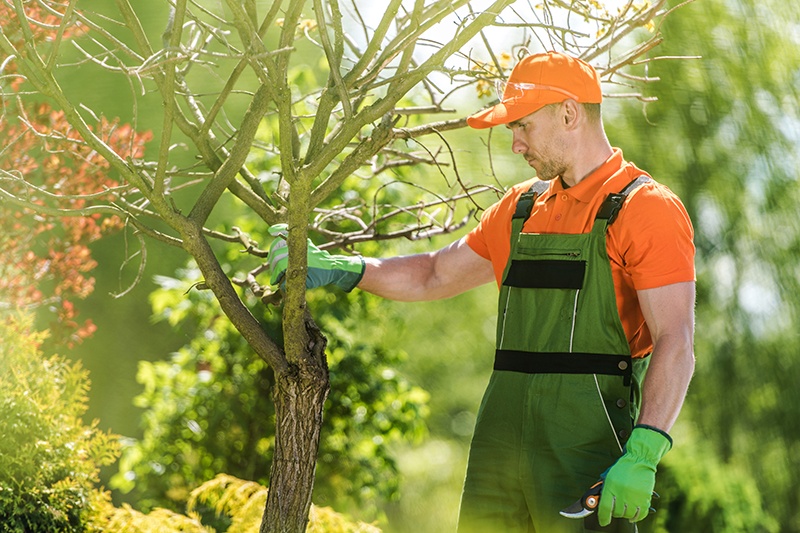
Key Takeaways
- Importance of maintaining tree health in urban areas.
- Benefits of regular tree care and maintenance.
- Practical tips for homeowners to manage their trees effectively.
- How professional tree services can help ensure the longevity of urban trees.
Table of Contents
- Importance of Urban Trees
- Benefits of Regular Tree Care
- Common Tree Care Practices
- DIY Tree Care Tips for Homeowners
- When to Call a Professional
- Case Studies
- Final Thoughts
Importance of Urban Trees
The health and presence of trees in urban areas are critical to the environment and the well-being of city residents. Trees give shade, enhance air quality, and enhance the aesthetic beauty of neighborhoods. Implementing regular tree trimming, Palm Coast can help maintain these benefits, ensuring safety and promoting growth.
Beyond their aesthetic appeal, urban trees play a vital role in the ecological balance. They serve as natural air filters by absorbing pollutants, including carbon dioxide and sulfur dioxide. Additionally, trees provide a habitat for urban wildlife like birds and small mammals, creating a more vibrant and sustainable city environment. By reducing stormwater runoff, urban trees also help mitigate flooding in cities, making them essential for urban planning and resilience efforts.
Benefits of Regular Tree Care
Regular tree care is vital for maintaining healthy trees. Proper maintenance helps prevent diseases, pests, and safety hazards. Additionally, well-maintained trees can increase property values and contribute to the overall wellness of the ecosystem. A study by the USDA Forest Service highlights that urban trees can significantly boost energy savings by providing natural cooling.
Furthermore, routine tree care promotes vigorous growth and longevity. This means fewer emergencies, such as falling branches or diseased trees needing removal. Regularly pruned and treated trees are also more resilient to adverse weather conditions, making them a safer and more reliable addition to urban settings. In fact, well-maintained trees can withstand storms better and are less likely to cause damage to properties or utilities, providing peace of mind to homeowners and city planners alike.
Tree care in Palm Coast is meticulously managed to ensure the lush greenery that defines the city’s landscape. With the goal of preserving the natural beauty of its surroundings, Palm Coast implements a comprehensive tree maintenance program that includes regular pruning, trimming, and disease management. Professional arborists work diligently to safeguard against potential hazards while promoting the health and longevity of the diverse tree species in the area. Residents and authorities prioritize environmental stewardship, recognizing trees’ invaluable role in providing shade, enhancing air quality, and enriching the overall aesthetic appeal of Palm Coast’s urban and suburban spaces.
Common Tree Care Practices
- Pruning: Helps remove dead or diseased branches and shapes the tree.
- Watering: Ensures that trees get enough water, especially during dry seasons.
- Mulching: Helps retain moisture and improve soil conditions.
- Fertilizing: Supplies essential nutrients to support tree health and growth.
These practices are foundational and apply to almost all tree species in urban areas. Each technique plays a specific role in optimal tree health. Pruning, for instance, improves the tree’s appearance, encourages new growth, and prevents potential hazards. Effective watering schedules can establish deep root systems, which are crucial for drought tolerance and overall tree stability. Meanwhile, mulching regulates soil temperature, reducing the stress on tree roots, and fertilizing ensures that trees get the nutrients they need to thrive, especially in nutrient-poor urban soils.
DIY Tree Care Tips for Homeowners
While professional help is often necessary, there are several steps homeowners can take to care for their trees:
- Regular Inspections: Check for signs of disease or pest infestations. Look for changes in leaf color, unusual growth patterns, or physical damage such as cracks in the bark or visible fungus.
- Proper Watering: Water deeply but infrequently to encourage strong root growth. Giving a plant too much water can be just as detrimental as not giving it enough, resulting in either root rot or weakened root structures.
- Mulch Application: Spread mulch around the tree’s base to retain moisture and shield against temperature changes. Mulch serves to deter weed growth and gradually enhance soil quality.
- Correct Pruning: Prune during the dormant season to minimize stress. Always use clean, sharp tools to prevent disease spread and make precise cuts that promote healthy regrowth.
These simple measures can make a significant difference. Maintaining a consistent care routine is crucial for fostering resilient and flourishing trees in your yard. For older trees, it may be beneficial to establish a baseline by consulting a professional at least once to understand the specific needs of each tree species on your property and adjust your care practices accordingly.
When to Call a Professional
Some tree care tasks are best left to professionals. These include dealing with large trees, tree removal, and handling trees with structural issues. Professionals have the expertise and equipment needed to ensure safe and effective tree care. If you’re unsure, it’s wise to consult with a tree care expert to evaluate your needs.
Additionally, professional tree services can perform in-depth health evaluations and provide tailored solutions that may not be immediately obvious to a layperson. They can implement advanced techniques and treatments that go beyond basic care practices, ensuring optimal tree health. Professionals can also offer treatment for tree diseases and pest infestations that require specific knowledge and chemicals not readily available to the general public.
Case Studies
Here are a few real-life examples of successful urban tree management:
- City of Portland: Implemented a comprehensive tree care program that significantly reduced tree-related incidents. Portland has enhanced urban greenery and safety by investing in regular maintenance and community awareness programs.
- New York City’s MillionTreesNYC: This initiative aimed to plant one million new trees, enhancing urban greenery and cooling benefits. The program has successfully engaged local communities in tree planting and care, improving urban biodiversity and resilience.
These case studies highlight the positive outcomes of well-structured tree care programs. Cities that invest in tree health and management reap long-term benefits, demonstrating the value of such initiatives. They also showcase how community involvement and dedicated funding can lead to successful and sustainable urban forestry programs.
Final Thoughts
Tree care is essential for maintaining a beautiful and healthy urban environment. Whether you’re a homeowner or a city planner, understanding the benefits and methods of proper tree maintenance can lead to healthier communities and enhanced urban landscapes. Remember, well-maintained trees are an investment in your property and the environment.
By prioritizing tree care, individuals and communities can ensure that urban trees continue providing numerous benefits for generations to come. This includes everything from improved air quality and reduced energy costs to enhanced property values and a greater sense of well-being among residents. In summary, the collective effort to care for urban trees reflects a commitment to a healthier, more sustainable future for all.
